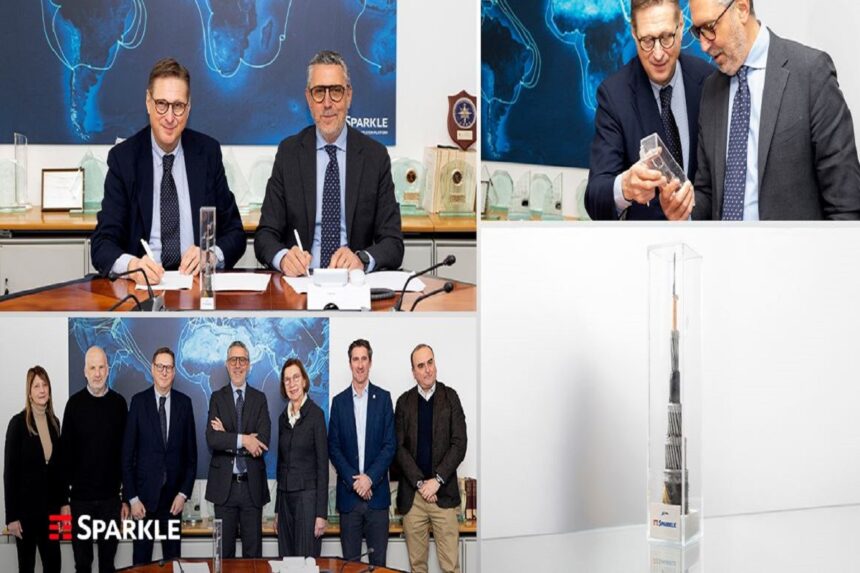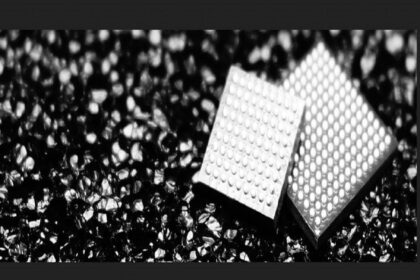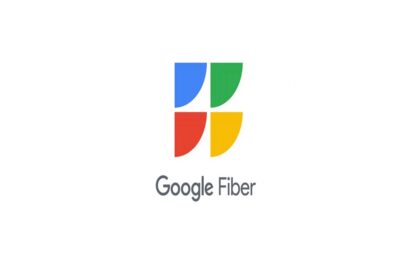Sparkle, the subsea cable unit of Telecom Italia (TIM), has signed an agreement with Oceanic Environmental Cables (OEC) to recycle over 22,000 kilometers of unused subsea telecommunications cables. The partnership focuses on recovering and repurposing cables laid in the Mediterranean, furthering efforts toward sustainability in the telecommunications sector.
What is the Scope of the Cable Recycling Agreement?
OEC will be responsible for acquiring and processing various types of unused cables from Sparkle, including telegraph, coaxial, and fiber optic subsea cables. The total length of cables involved in the agreement exceeds 22,000 kilometers, and the recycling effort is expected to significantly reduce environmental impact by reusing materials that would otherwise go to waste.
This collaboration marks a pivotal moment in the circular economy, as Sparkle aims to contribute to sustainability by recovering valuable materials from out-of-service cables, which will then be reintroduced into the industrial value chain.
How Will the Cables Be Recycled?
Once the unused subsea cables are removed from the seabed, they will be transported to OEC’s facilities for dismantling. The cables will be carefully separated into components such as optical fiber, copper, steel, aluminum, and various plastics, including HDPE and LDPE. Each material will undergo thorough cleaning and analysis, after which it will be processed into high-quality regranulates suitable for reuse.
OEC’s expertise in cable recycling ensures that these components are given a second life, reducing the need for virgin materials and promoting a more sustainable approach to manufacturing. This process is expected to save over 35,000 tons of CO2 emissions, aligning with Sparkle’s broader environmental goals.
The Environmental and Economic Impact of Recycling Subsea Cables
The environmental benefits of this recycling initiative are significant. By reclaiming materials from obsolete cables, Sparkle and OEC help mitigate the environmental damage caused by the disposal of industrial waste, particularly in marine environments. The project contributes to the reduction of carbon emissions by reusing materials that would otherwise need to be mined or produced anew.
Furthermore, the recycling initiative aligns with Sparkle’s commitment to the circular economy, ensuring that resources are reused and that the telecommunications industry takes steps to address its environmental footprint. According to Sparkle CEO Enrico Bagnasco, this partnership represents a “concrete step toward a more sustainable future” where resources from the past are transformed into opportunities for the present and future.
What Are the Business Implications for Sparkle and OEC?
For Sparkle, this collaboration not only demonstrates environmental responsibility but also strengthens its position as a leader in sustainability within the telecommunications industry. As part of a broader effort to enhance operational efficiency, the company continues to focus on reducing waste and lowering its carbon footprint.
On the other hand, OEC’s role in dismantling and processing these materials positions it as a key player in the growing market for cable recycling, which is expected to become increasingly valuable as the demand for raw materials and sustainability solutions intensifies. This partnership opens new revenue streams for both companies while addressing an industry-wide challenge.
Looking Ahead: The Future of Subsea Cable Recycling
Sparkle operates over 600,000 kilometers of subsea cables that connect countries across Europe and the Americas. Given the scale of Sparkle’s network, there is substantial potential for future recycling projects that could further reduce the environmental impact of the company’s operations.
Additionally, Italy’s ongoing efforts to bring the Sparkle network under state control suggest that the government could look to support more sustainable and resource-efficient practices within the telecommunications sector.
Frequently Asked Questions
1. What types of cables will be recycled in the Sparkle-OEC agreement?
Sparkle will provide OEC with unused telegraph, coaxial, and fiber optic subsea cables, all laid in the Mediterranean. These cables will undergo a recycling process to reclaim valuable materials.
2. How does subsea cable recycling help reduce carbon emissions?
By recycling subsea cables, Sparkle and OEC help prevent the need for virgin materials, which would otherwise contribute to higher carbon emissions. The recycling process is estimated to save over 35,000 tons of CO2 emissions.
3. What happens to the components of the recycled cables?
The components of the recycled cables, including optical fiber, copper, and various plastics, are separated, cleaned, and processed into high-quality regranulates. These materials are then returned to industrial use as secondary raw materials.
4. Why is the partnership between Sparkle and OEC significant?
This collaboration is significant because it represents a pioneering effort to incorporate circular economy practices in the telecommunications industry, focusing on sustainability and resource reuse while addressing the environmental impact of unused subsea cables.
5. What are the potential financial benefits of subsea cable recycling?
Beyond the environmental impact, subsea cable recycling can generate economic value by reclaiming valuable metals and materials, with companies like TXO projecting substantial earnings from the sale of recycled copper and other metals.



















